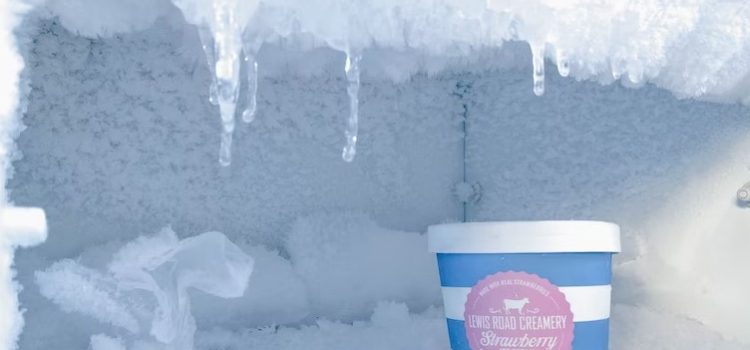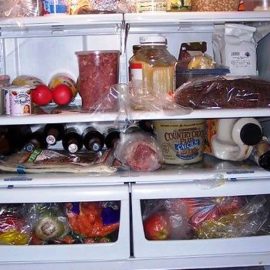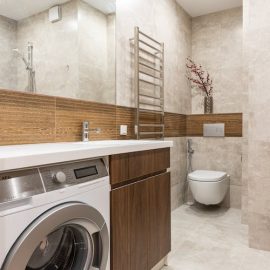
Efficient Freezing: How to Optimize Your Freezer’s Power Consumption
Keeping your freezer running efficiently not only helps preserve your food but also saves energy and reduces your electricity bills. In this blog post, we’ll explore practical tips and adjustments you can make to optimize your freezer’s power consumption without compromising its performance. By implementing these simple strategies, you can contribute to a greener environment while maintaining the quality and longevity of your frozen goods. Let’s dive in!
Proper Temperature Settings
The first step in managing your freezer’s power consumption is setting the temperature correctly. Aim for a temperature between -18°C and -20°C (-0.4°F and -4°F). Avoid setting it too low, as it unnecessarily increases energy usage. Use a freezer thermometer to ensure accurate temperature monitoring, and adjust the settings accordingly if needed. Remember, maintaining a consistent temperature is key to preserving food quality while maximizing energy efficiency.
Organize and Declutter
An organized freezer not only saves you time but also improves energy efficiency. Regularly declutter your freezer by removing expired or unused items. Arrange your food items in a systematic manner, grouping them by category and labeling them if necessary. This practice minimizes the time the freezer door remains open, reducing energy loss. Consider using clear containers or freezer bags to enhance visibility and ease of access. By optimizing the space and reducing unnecessary clutter, you can improve airflow within the freezer and help maintain a more stable temperature.
Seal and Insulate
Proper sealing and insulation are crucial for preventing cold air from escaping your freezer. Inspect the door gasket for any cracks or signs of wear and tear. Replace the gasket if necessary to ensure a tight seal. Additionally, check for gaps or leaks around the freezer’s edges and seal them with appropriate insulation materials. This step prevents warm air from entering and cold air from escaping, reducing the workload on the freezer’s cooling system and ultimately lowering energy consumption.
Regular Defrosting and Maintenance
 Frost build-up can reduce the efficiency of your freezer, leading to increased energy usage. Schedule regular defrosting sessions to remove excess ice and frost. Follow the manufacturer’s instructions for defrosting or use the automatic defrost feature if available. Clean the interior of the freezer and ensure proper airflow around the cooling coils. Keep the condenser coils free of dust and debris by gently vacuuming or using a soft brush. Regular maintenance keeps your freezer running smoothly and optimizes its power efficiency.
Frost build-up can reduce the efficiency of your freezer, leading to increased energy usage. Schedule regular defrosting sessions to remove excess ice and frost. Follow the manufacturer’s instructions for defrosting or use the automatic defrost feature if available. Clean the interior of the freezer and ensure proper airflow around the cooling coils. Keep the condenser coils free of dust and debris by gently vacuuming or using a soft brush. Regular maintenance keeps your freezer running smoothly and optimizes its power efficiency.
Consider Energy-Saving Features
If you’re in the market for a new freezer, look for models with energy-saving features. Energy Star-certified freezers are designed to meet strict efficiency guidelines, ensuring they consume less electricity without compromising performance. Look for options like high-efficiency compressors, improved insulation, and advanced temperature control systems. These features can significantly reduce energy consumption and save you money in the long run.
Utilize Freezer-Friendly Practices
Maximize the efficiency of your freezer by employing freezer-friendly practices. First, allow hot foods to cool down to room temperature before placing them in the freezer. This prevents the freezer from working harder to cool down the hot items and reduces energy consumption. Additionally, portion your food into smaller, airtight containers or freezer bags. Smaller portions freeze and thaw more quickly, minimizing energy usage. Label and date your frozen items to keep track of their freshness and reduce the likelihood of food waste. By adopting these freezer-friendly habits, you can optimize your freezer’s power consumption and improve overall efficiency.
By implementing these practical tips, you can effectively adjust your freezer’s power consumption and promote energy efficiency. With proper temperature settings, organization, sealing, regular maintenance, consideration of energy-saving features, and utilization of freezer-friendly practices, you’ll not only reduce your carbon footprint but also enjoy the benefits of lower electricity bills and well-preserved frozen goods.



